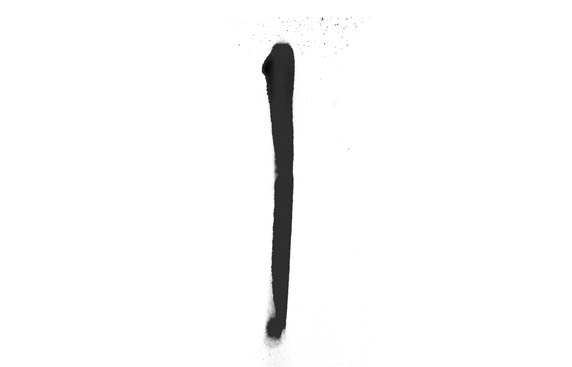Ink Bleeding and Smudging or in Arabic Calligraphy:
Causes and Solutions
Table of Contents
 Introduction
Introduction- Understanding Smudging and Ink Bleeding
- Factors Contributing to Smudging and Ink Bleeding
- Ink Quality
- Paper Quality
- Writing Tool
- Calligraphy Technique
- Tips to Minimize Smudging and Ink Bleeding
- Ink Selection
- Paper Selection
- Drying Time
- Proper Pen Angle
- Avoiding Smudging and Ink Bleeding in Arabic Calligraphy
- Conclusion
- FAQs
1. Introduction
Arabic calligraphy is a mesmerizing art form that requires precision and skill. However, one common challenge faced by calligraphers is the issue of smudging or ink bleeding. Smudges and ink bleeding can ruin the appearance of a calligraphic piece and compromise its aesthetic value. In this article, we will explore the causes of smudging and ink bleeding in Arabic calligraphy and provide practical solutions to overcome these challenges.
2. Understanding Smudging and Ink Bleeding
Smudging occurs when wet ink comes into contact with another surface, causing it to smear or spread unintentionally. Ink bleeding, on the other hand, refers to the excessive spreading of ink on the paper, leading to blurry and distorted letterforms. Both these issues can significantly impact the clarity and legibility of the calligraphic work.
3. Factors Contributing to Smudging and Ink Bleeding
Several factors can contribute to smudging and ink bleeding in Arabic calligraphy. Let’s explore some of the key factors to better understand these challenges:
Ink Quality
The quality of the ink used plays a vital role in minimizing smudging and ink bleeding. Inferior quality or low-viscosity inks are more prone to smudging, as they take longer to dry and tend to spread easily on the paper.
Paper Quality
The choice of paper also influences smudging and ink bleeding. Absorbent papers with a rough texture tend to absorb more ink, leading to smearing and bleeding. Smooth and coated papers, on the other hand, allow the ink to sit on the surface, reducing the chances of smudging.
Writing Tool
The type of writing tool used in Arabic calligraphy can affect smudging and ink bleeding. Traditional calligraphy pens with broader nibs may hold more ink, increasing the chances of ink spreading. Modern brush pens or markers with finer tips can provide better control and minimize smudging.
Calligraphy Technique
The calligrapher’s technique and hand movements can also contribute to smudging and ink bleeding. Applying excessive pressure while writing or holding the pen at an incorrect angle can cause the ink to flow inconsistently, resulting in smudges or ink bleeding.
4. Tips to Minimize Smudging and Ink Bleeding
To overcome the challenges of smudging and ink bleeding, consider the following tips:
Ink Selection
Choose high-quality calligraphy inks that are specifically formulated for Arabic script. These inks tend to dry quickly and have good color saturation, reducing the chances of smudging and ink bleeding.
Paper Selection
Opt for smooth and coated papers designed for calligraphy or high-quality art papers with a weight suitable for ink absorption. These papers provide a stable surface for the ink, minimizing smudging and ink bleeding.
Drying Time
Allow sufficient drying time between strokes or lines to prevent the wet ink from coming into contact with the paper or the writer’s hand. Patience and careful handling of the calligraphic piece can go a long way in avoiding smudging.
Proper Pen Angle
Maintain a consistent and appropriate pen angle while writing to ensure a smooth and controlled ink flow. Experiment with different pen angles to find the one that works best for you and minimizes the risk of smudging.
5. Avoiding Smudging and Ink Bleeding in Arabic Calligraphy
By implementing the tips mentioned above and practicing proper technique, calligraphers can significantly reduce the occurrence of smudging and ink bleeding. Consistency in ink quality, paper selection, and calligraphy tools, combined with attention to detail and precision, will enhance the overall quality of Arabic calligraphic work.
Conclusion
Smudging and ink bleeding can pose challenges in Arabic calligraphy, but with the right techniques and considerations, they can be minimized or even avoided. The choice of ink, paper, writing tool, and proper calligraphy techniques play crucial roles in preventing smudging and ink bleeding. By taking these factors into account and implementing the tips provided, calligraphers can create stunning and flawless Arabic calligraphy pieces.
FAQs
- Can smudging and ink bleeding be fixed after they occur?
- What type of paper is recommended for Arabic calligraphy to minimize smudging?
- Is it possible to prevent ink bleeding entirely in Arabic calligraphy?
- How long should I wait for the ink to dry before touching the calligraphy?
- Are there any specific techniques or exercises to improve control and reduce smudging in Arabic calligraphy?
